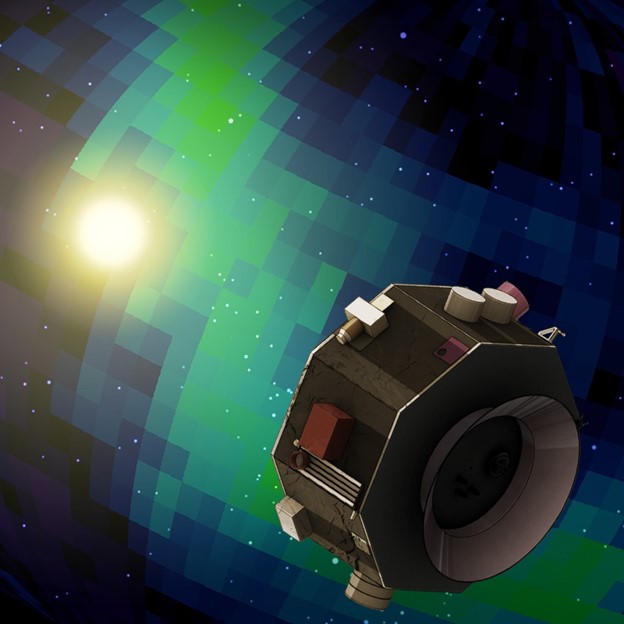NASA has selected a science mission planned for launch in 2024 that will sample, analyze, and map particles streaming to Earth from the edges of interstellar space.
The Interstellar Mapping and Acceleration Probe (IMAP) mission will help researchers better understand the boundary of the heliosphere, a sort of magnetic bubble surrounding and protecting our solar system. This region is where the constant flow of particles from our Sun, called the solar wind, collides with material from the rest of the galaxy. This collision limits the amount of harmful cosmic radiation entering the heliosphere. IMAP will collect and analyze particles that make it through.
“This boundary is where our Sun does a great deal to protect us. IMAP is critical to broadening our understanding of how this ‘cosmic filter’ works,” said Dennis Andrucyk, deputy associate administrator for NASA’s Science Mission Directorate in Washington. “The implications of this research could reach well beyond the consideration of Earthly impacts as we look to send humans into deep space.”
Another objective of the mission is to learn more about the generation of cosmic rays in the heliosphere. Cosmic rays created locally and from the galaxy and beyond affect human explorers in space and can harm technological systems, and likely play a role in the presence of life itself in the universe.
The spacecraft will be positioned about one million miles (1.5 million kilometers) away from Earth towards the Sun at what is called the first Lagrange point or L1. This will allow the probe to maximize use of its instruments to monitor the interactions between solar wind and the interstellar medium in the outer solar system.
The mission’s principal investigator is David McComas of Princeton University. The Johns Hopkins University’s Applied Physics Laboratory in Laurel, Maryland, will provide project management. The mission will carry 10 science instruments provided by international and domestic research organizations and universities.
IMAP was selected following an extensive and competitive peer review of proposals submitted in late 2017. The mission is cost-capped at $492 million, excluding cost for the launch vehicle.
This is the fifth mission in NASA’s Solar Terrestrial Probes (STP) Program portfolio. Others include the Solar Terrestrial Relations Observatory (STEREO), a collaboration with ESA (European Space Agency) that enabled a global view of the Sun and inner heliosphere; the Magnetospheric Multiscale (MMS) mission currently investigating the fundamental process of magnetic reconnection near Earth; the solar remote sensing mission Hinode, an ongoing collaboration with the Japan Aerospace Exploration Agency; and the Thermosphere, Ionosphere, Mesosphere Energetics and Dynamics (TIMED), a mission observing the outermost layers of the Earth’s atmosphere.
The Heliophysics Program Office at NASA’s Goddard Space Flight Center in Greenbelt, Maryland, manages the STP Program for the agency’s Heliophysics Division in Washington. NASA’s heliophysics missions seek to understand the Sun, and its interaction with the Earth and the solar system out to the interstellar medium, including space weather.
For additional information on heliophysics missions, visit:
-end-
Dwayne Brown
Headquarters, Washington
202-358-1726
dwayne.c.brown@nasa.gov



























